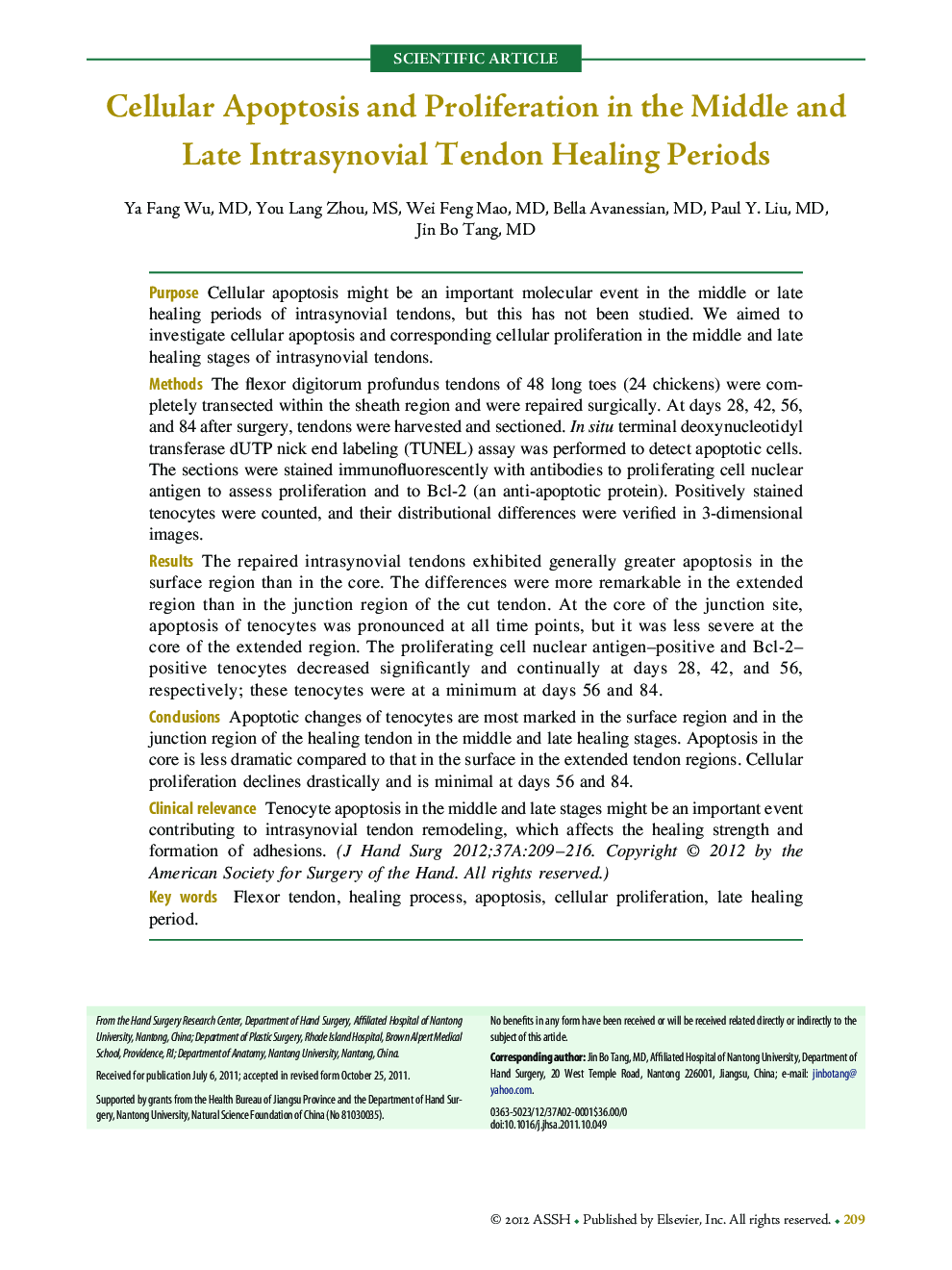| Article ID | Journal | Published Year | Pages | File Type |
|---|---|---|---|---|
| 4068917 | The Journal of Hand Surgery | 2012 | 8 Pages |
PurposeCellular apoptosis might be an important molecular event in the middle or late healing periods of intrasynovial tendons, but this has not been studied. We aimed to investigate cellular apoptosis and corresponding cellular proliferation in the middle and late healing stages of intrasynovial tendons.MethodsThe flexor digitorum profundus tendons of 48 long toes (24 chickens) were completely transected within the sheath region and were repaired surgically. At days 28, 42, 56, and 84 after surgery, tendons were harvested and sectioned. In situ terminal deoxynucleotidyl transferase dUTP nick end labeling (TUNEL) assay was performed to detect apoptotic cells. The sections were stained immunofluorescently with antibodies to proliferating cell nuclear antigen to assess proliferation and to Bcl-2 (an anti-apoptotic protein). Positively stained tenocytes were counted, and their distributional differences were verified in 3-dimensional images.ResultsThe repaired intrasynovial tendons exhibited generally greater apoptosis in the surface region than in the core. The differences were more remarkable in the extended region than in the junction region of the cut tendon. At the core of the junction site, apoptosis of tenocytes was pronounced at all time points, but it was less severe at the core of the extended region. The proliferating cell nuclear antigen–positive and Bcl-2–positive tenocytes decreased significantly and continually at days 28, 42, and 56, respectively; these tenocytes were at a minimum at days 56 and 84.ConclusionsApoptotic changes of tenocytes are most marked in the surface region and in the junction region of the healing tendon in the middle and late healing stages. Apoptosis in the core is less dramatic compared to that in the surface in the extended tendon regions. Cellular proliferation declines drastically and is minimal at days 56 and 84.Clinical relevanceTenocyte apoptosis in the middle and late stages might be an important event contributing to intrasynovial tendon remodeling, which affects the healing strength and formation of adhesions.
